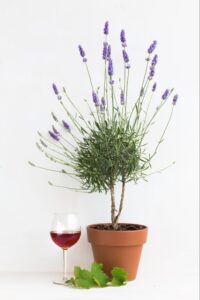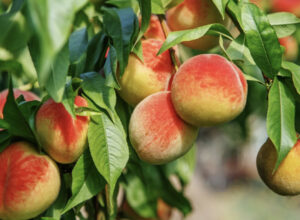Unlocking the Secrets of Effective Pine Tree Care

In regions such as Lancaster, PA, and its neighboring counties, the incorporation of Eastern White Pines into landscape designs has become a common practice among property owners and landscape professionals. Known for their lengthy, delicate needles, these pines are often chosen over other variants like spruce trees, primarily due to their distinct aesthetic and health advantages. It is crucial to note that, unlike certain fir trees, Eastern White Pines do not succumb to similar potential disease issues, thus providing a robust and relatively fast-growing evergreen option that effectively serves as a natural screen or windbreak.
However, despite their popularity and benefits, managing Eastern White Pines is not without its challenges, which can largely be mitigated through a thorough understanding of their inherent characteristics and requirements.
Ensuring the Health and Aesthetic of Pine Trees Through Strategic Measures
Property owners sometimes encounter declining health or maintenance challenges with mature pines, yet adherence to expert advice and tips can enhance the vitality and visual appeal of these majestic trees.
1) Meticulous Selection of Pine Trees
The optimal pine tree should exhibit a single central leader, from which all principal branches emanate. Purchasers should vigilantly avoid trees with co-dominant leaders to avert structural weaknesses, particularly where the branches converge, as well as ensure an upright, rather than outward, growth pattern. Furthermore, ensuring the tree is free from trunk and branch wounds and handling it with utmost care during transportation is vital.
2) Thoughtful Planting Location and Method for Pine Trees
A recurring mistake is the suboptimal planting of Eastern White Pines, often driven by a lack of awareness regarding their potential size. Mature specimens can achieve heights of 50-80 feet and widths spanning 20-40 feet, necessitating ample space for healthy development. Consideration for potential needle fall, proximity to property boundaries, pavement, or utility lines, and understanding that pines are not suitable as hedge plants, are fundamental to their successful establishment and long-term viability.
3) Pruning Pine Trees: A Task for Specific Circumstances
Pruning of Eastern White Pines, which naturally adopt a more open and sprawling shape compared to other conifers, should be executed judiciously and ideally under the advice of a Certified Arborist. While certain scenarios such as enabling improved air circulation or addressing storm damage may warrant crown thinning or cleaning, it’s crucial to bear in mind that pines, due to their soft wood, are susceptible to damage from external elements.
4) Implementing a Protective Buffer for Pine Trees
Abstaining from mowing under pine trees and maintaining a mulch bed of at least 12-18 inches between the tree and turfgrass not only mitigates weed development and retains moisture but also shields branch end buds from potential damage, thereby fostering an enhanced tree shape as it matures.
5) Ameliorating Soil Conditions Beneath Pine Trees
Periodic fertilization and thorough soil tests, which inform any necessary pH and nutrient corrections, are key to addressing occasional yellowing in pines, which may indicate suboptimal soil conditions even in their native regions such as suburban neighborhoods of Pennsylvania.
6) Ensuring Appropriate Watering Practices for Pine Trees
Evergreens typically struggle in saturated property areas, so thoughtful consideration of land topography when planting pines is essential. Particularly during drought conditions and in their early growth stages, pines require deep watering several times a week to prevent exacerbating pest issues.
7) Engaging Professional Tree Services for Pest and Disease Management
Numerous pests, such as aphids, bagworms, and bark beetles, along with various diseases like needlecast and root rot, can pose substantial threats to the health and longevity of pine trees. Most issues correlating with Eastern White Pines can be mitigated or preemptively addressed through a dedicated Plant Health Care program. For residents of Lancaster, Lebanon, York, or Dauphin Counties in PA, seeking the expertise of a Certified Arborist for property inspections and further assistance is highly recommended and readily available upon contact.
8) Comprehensive Evaluation of Soil Composition for Pines’ Sustainability
A deep-dive into the soil composition that envelops the root system of the Eastern White Pine provides a foundational perspective towards ensuring their longevity and vibrancy. The pines, indigenous to various areas, including certain parts of Pennsylvania, are familiar with the native soil, which significantly influences their overall vitality. Engaging in regular soil assessments and subsequently adjusting the nutrient balance and pH levels provides a hospitable environment for the pines to flourish. A routine integration of organic matter, sourced preferably from native environments, further enriches the soil quality, offering a semblance of the natural habitat from which these pines originate.
9) Strategic Employment of Fertilization Techniques
Equally paramount is the strategic employment of fertilization techniques, tailored to cater to the unique nutritional requisites of the Eastern White Pine. Engaging experts in plant health management to administer a meticulous evaluation of the tree’s nutritional needs ensures the deployment of a precise fertilization regimen. This regimen not only addresses any existing nutritional deficiencies but also empowers the tree to bolster its inherent defenses against potential pests and diseases. Utilizing fertilizers that mimic the nutritional composition found in the pines’ natural habitats minimizes the risk of nutrient shock, while simultaneously enhancing their capacity for robust growth.
10) Employing Preventative Measures Against Potential Threats
As with any species, Eastern White Pines are susceptible to various pests and diseases, necessitating a proactive approach towards their management. Integrating preventative measures, such as the use of pest deterrents that are ecologically responsible and conducive to the local environment, safeguard the health of the pines without adversely impacting the surrounding ecosystem. Similarly, preemptive actions against diseases, such as the strategic placement of wind barriers during spore dissemination periods of specific pathogens, serve to mitigate the likelihood of disease manifestation.
11) Understanding the Bio-Dynamics of Eastern White Pines
A nuanced understanding of the bio-dynamics of Eastern White Pines, particularly in the context of their interaction with surrounding flora and fauna, contributes towards more informed care and maintenance strategies. Observing the various species that interact with, or are dependent upon, the pines provides insight into potential symbiotic relationships or threats that may arise. Aligning maintenance strategies to enhance beneficial interactions, while mitigating negative ones, supports a holistic approach to tree management that goes beyond mere aesthetics and health to consider broader ecological implications.
12) Engaging in Sustainable Practices for Future Generations
Looking forward, the adoption of sustainable practices in the management of Eastern White Pines guarantees their availability and health for future generations. Engaging in practices that prioritize not only the immediate health but also the future sustainability of these trees safeguards their existence for years to come. This entails ensuring that any interventions, whether they be in the form of pest management, fertilization, or pruning, are conducted in a manner that is conscious of, and minimal in, their impact on the tree and its surroundings.
Conclusion
Ensuring the adaptation of these strategies in alignment with local regulations and ecological guidelines further underscores the commitment to responsible and sustainable landscape management, preserving not just the Eastern White Pines, but the ecological balance of the region.




